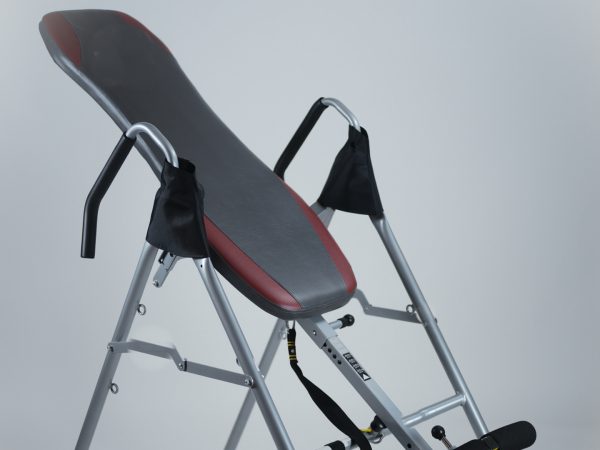Is Hanging Upside Down Good For The Back?
Do you have an opinion on the health benefits of using inversion tables?
Andrew Weil, M.D. | May 20, 2020

Inversion tables and other types of inversion therapy using chairs, boots and other devices that enable you to hang upside down have been around for a long time. The idea is that by letting gravity exert its effects on your spine, you can get rid of back pain, neck problems or any number of complaints. I’ve seen ads on the Internet touting inversion therapy for improving lymph flow in order to boost the effectiveness of the immune system, for correcting skeletal misalignments, improving balance and circulation and for reducing stress on joints, ligaments and muscles.
Mostly, inversion therapy is promoted for relief of back pain, but there’s very little medical research on the subject, and from what I’ve read, no scientific evidence demonstrating that inversion therapy provides more than temporary relief, if that. The only study I’ve seen showing that inversion therapy was helpful found that it reduced the need for surgery in 10 people with a condition called lumbar discogenic disease that causes discs in the back to thin and weaken. This study was quite small – only 26 people participated and only 13 had inversion therapy. The rest had physiotherapy.
Another study published in July (2019) found that inversion caused significant changes in intercranial pressure and blood flow, which the researchers wrote can increase the chance of complications when used in patients with a history of elevated intracranial pressure. For this reason, they recommended that inversion therapy should be used with caution. Increased intracranial pressure can damage the brain.
Beyond that, the American College of Physicians’ 2017 clinical guidelines noted that while inversion and other traction therapies don’t appear to be harmful in healthy people, there’s little good quality evidence for their effectiveness.
Inversion therapy won’t reverse the effects of gravity, and while it may elongate your spine while you’re hanging there, the feeling won’t last when you’re right-side up. What’s more, dangling upside down can result in some unpleasant side effects including headaches or bleeding into the retina. And it could even worsen back problems. If you are tempted to try inversion therapy despite these potential hazards, be aware that it can be even riskier if you have heart disease, hypertension, glaucoma or other eye diseases, or are pregnant.
If your back bothers you, I suggest that you read my favorite book on the subject, Healing Back Pain: The Mind Body Connection by John Sarno, MD (Mass Market Paperback, 2018). You’re much more likely to get lasting help by spending $9 for a paperback copy of this classic than shelling out much more on an inversion device.
Andrew Weil, M.D.
Source:
K.S. Prasad et al, “Inversion therapy in patients with pure single level lumbar discogenic disease: a pilot randomized trial,” Disability and Rehabilitation, January 23, 2012, doi:10.3109/09638288.2011.647231












